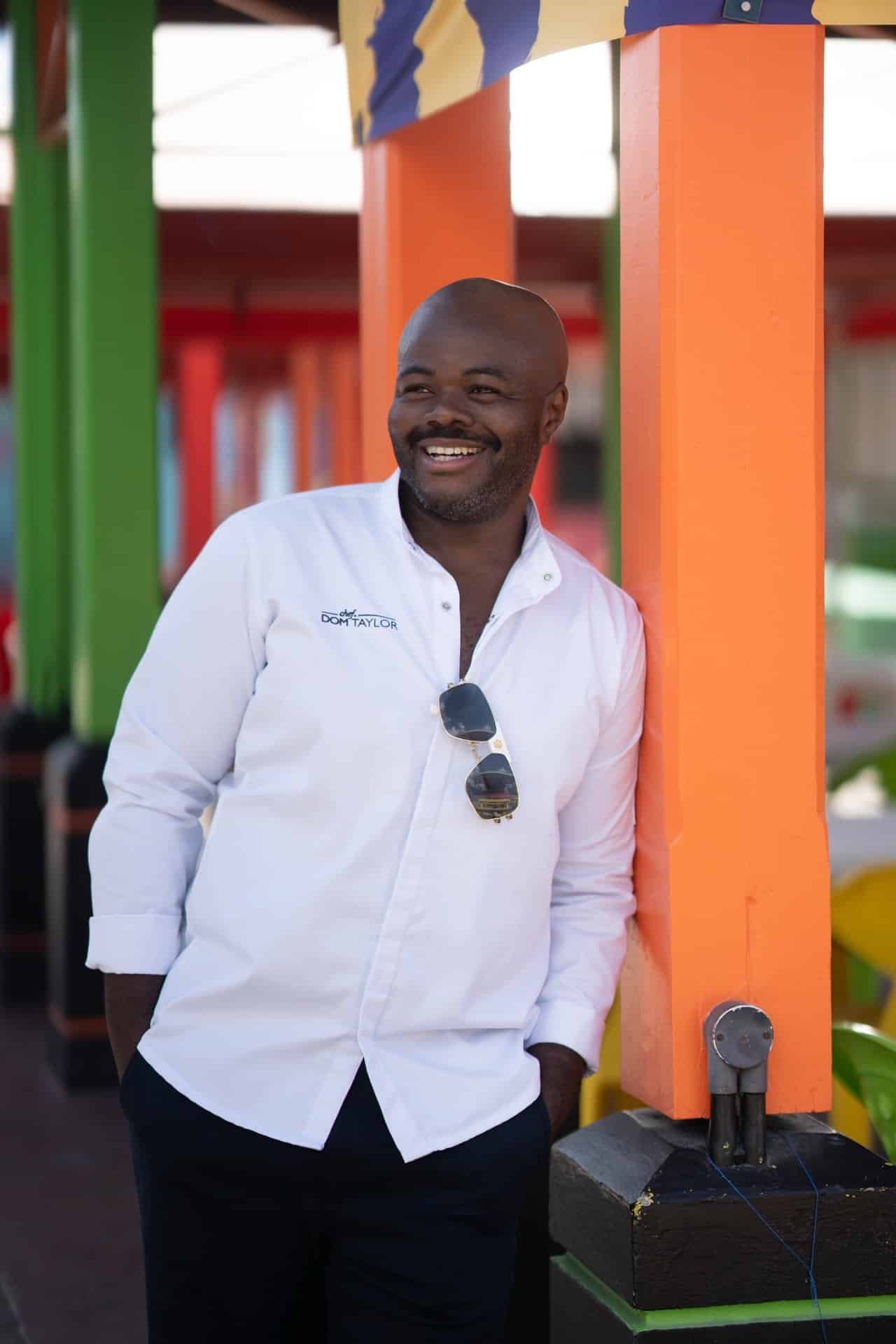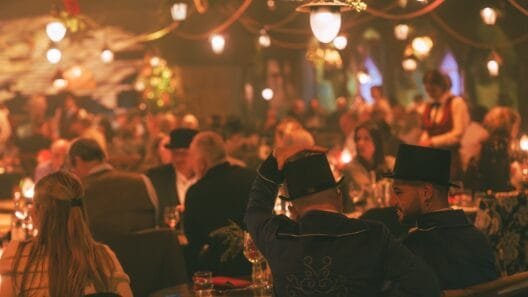Chef Dom Taylor grew up in South East London, raised on the rich flavours of his Jamaican and Saint Lucian heritage — cocoa bread patties from Brixton Market, gizzard tarts wrapped in brown paper, and the kind of home-cooked meals that told stories. After winning Five Star Kitchen: Britain’s Next Great Chef and making waves with The Good Front Room, he’s back with a new project that hits even closer to home. Marvee’s Food Shop is his most personal venture yet — a playful, soulful reimagining of the Caribbean takeaway, rooted in family, memory, and the music of everyday life.
What inspired the shift from the refined vibe of The Good Front Room to the more laid-back energy of Marvee’s Food Shop?
The Good Front Room was about showing the elegance and depth of Caribbean cuisine — a seat at the fine dining table. But Marvee’s Food Shop is about the everyday magic: the takeaway counter, the foil container, the loud laughter and louder flavours. It’s a love letter to everything I grew up on — unpretentious, packed with soul, and full of character.
How does your mother Marvee’s cooking legacy live on in this new space — both on the plate and in the atmosphere?
My mum, Marveline — or Marvee as everyone calls her — is the spirit of the place. The recipes, the warmth, the unapologetic seasoning – it’s all her. She taught me how to stretch a pot, how to feed people like you love them. From the jerk, to the plantain jam, it’s her soulful flavours that I remember — and you can feel her in the welcome you get when you walk through the door.

You’re turning classics like Bammy and Festival into waffles. How did that idea come about, and what’s the reaction been like so far?
It started with a bit of playfulness in the kitchen — we pressed a festival dough into a waffle iron, and suddenly we had this crispy, golden base that felt nostalgic but new. Same with bammy — reworking it as a waffle gave it a brilliant texture that soaks up sauce. The response has been amazing. People light up when they see something familiar flipped on its head like that.
Marvee’s opens inside a music and event space — how important is sound and culture to the dining experience you’re creating?
It’s everything. In our culture, food doesn’t live in silence. The music, the rhythms, the basslines — they shape the vibe. Whether it’s rock, 90s dancehall, or gospel on a Sunday, sound is part of the seasoning. Being in a space where food and music meet just feels like home to me.
From scotch bonnet to spiced banana blossom, your flavours are bold. How do you balance tradition with reinvention in your kitchen?
I lead with respect. Respect for the origin, for the elders, for the ingredients. But I’m also here to push it forward. So if I’m using banana blossom like it’s fried chicken, or pairing curry goat with a coconut garlic sauce, it’s because I believe the culture can hold it. We’ve got a deep bench of flavours and stories — I just want to add a new verse to the song.
What are your personal favourite memories of Caribbean takeaways in London — and how have they shaped this new venture?
I remember standing in line, watching aunties argue over whose rice and peas were best, the smell of fried chicken and curry goat drifting out the door. I remember the polystyrene containers, the clatter, the chaos — but also the care. Marvee’s is built on those memories. It’s the same spirit, but sharper — more playful, more considered, more me.
The interiors channel retro Caribbean homes — how did you work with Yvadney Davis to bring that nostalgia to life?
Yvadney just got it. She understood that Caribbean design isn’t just about palm prints — it’s glass cabinets, lace runners, family portraits, plastic-covered sofas. She brought that to the space through textures, colours, and her art — which doesn’t just hang on the walls but tells a story. Together we created a room that feels lived in, loved in — like a memory made physical.
You’ve been championing Caribbean food in London for years. What do you think still needs to change in how it’s represented?
We’re still boxed in — still not always seen as sophisticated, or diverse, or worthy of investment. Caribbean food is nuanced, it’s regional, it’s innovative. I want us to have more spaces, more platforms, more pride in pushing boundaries. We shouldn’t have to dilute or explain ourselves to be accepted. We just need to be seen — properly, and fully.





